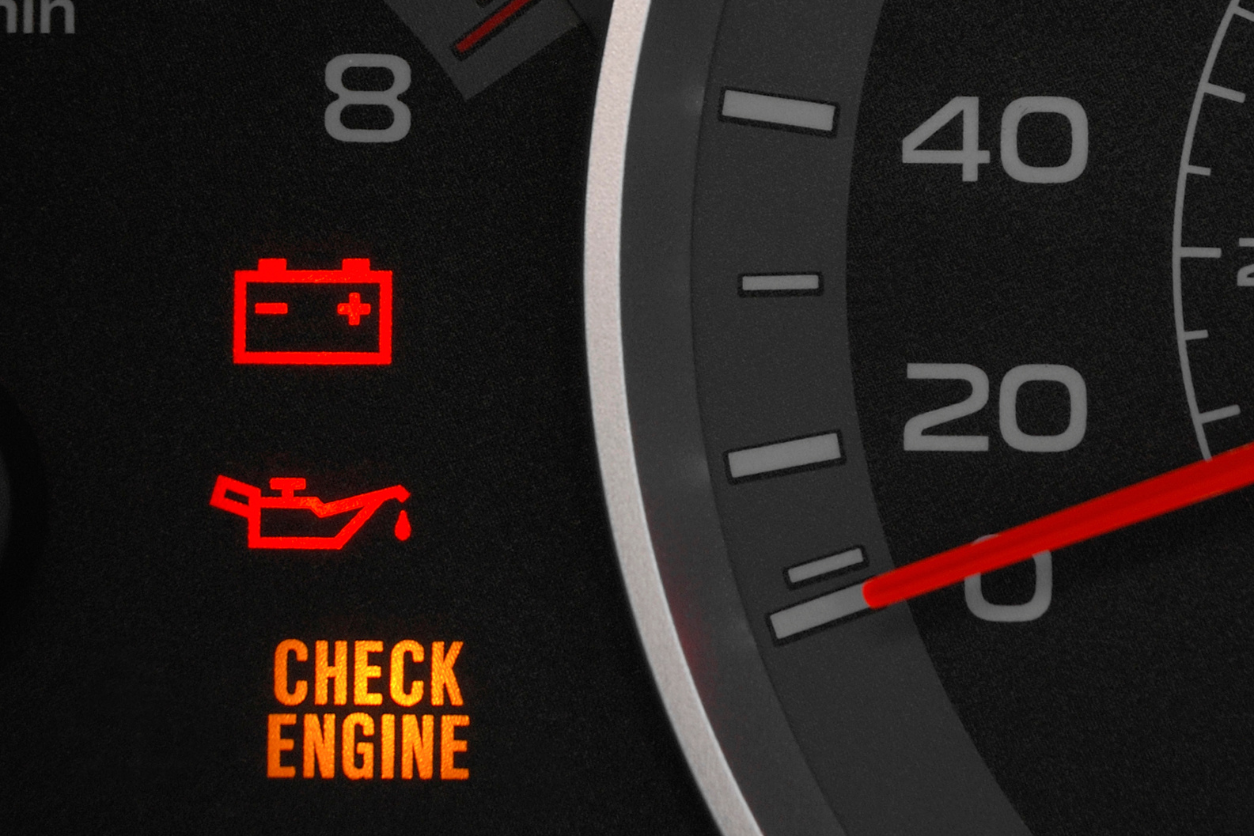Few things can be more alarming for a driver than seeing a warning light suddenly appear on the dashboard. Among these, the check engine light is perhaps the most notorious. It can signal anything from a minor issue to a major problem, leaving many drivers confused and anxious. Understanding what these engine lights really mean can help you take the appropriate steps and potentially save you from costly repairs. Let’s break down the most common engine warning lights and what they typically indicate.
1. Check Engine Light (CEL)
What It Is: The check engine light is one of the most important and misunderstood dashboard indicators. It can appear as a simple icon of an engine or as text saying “Check Engine.”
What It Means: This light can be triggered by a variety of issues, ranging from something as simple as a loose gas cap to more serious problems like a faulty oxygen sensor, malfunctioning catalytic converter, or issues with the mass airflow sensor. The light can either be solid or flashing—if it’s flashing, it’s an indication of a more severe problem that requires immediate attention.
What to Do: If the light is solid, it’s usually safe to continue driving, but you should have the car checked by a mechanic as soon as possible. If it’s flashing, pull over safely and call for assistance. Ignoring a flashing check engine light could lead to more serious damage to your vehicle.
2. Oil Pressure Warning Light
What It Is: This light resembles an old-fashioned oil can and is designed to alert you to issues with your car’s oil pressure.
What It Means: The oil pressure warning light can indicate that your car’s oil levels are too low, the oil pump isn’t circulating enough oil, or there’s a problem with the oil pressure sensor itself. Without proper oil circulation, the engine can quickly suffer from lack of lubrication, leading to overheating or engine failure.
What to Do: If this light comes on, check your oil level as soon as possible. If the level is low, add the recommended type of oil. If the light remains on after topping off the oil, or if the oil level was adequate to begin with, you should not continue driving the vehicle. Instead, have it towed to a mechanic for further inspection.
3. Battery Warning Light
What It Is: The battery light is typically a simple icon of a battery and indicates a problem with the vehicle’s electrical charging system.
What It Means: This light may indicate an issue with the battery itself, the alternator, or the wiring between the two. It can also suggest that the battery is not charging properly. If the alternator fails, your car will eventually run out of battery power and stall.
What to Do: If this light comes on while driving, try to minimize the use of electrical systems such as the radio or air conditioning. Get to a repair shop as soon as possible to have the electrical system checked. If the car stalls, you’ll need to call for a tow.
4. Coolant Temperature Warning Light
What It Is: Often depicted as a thermometer submerged in liquid, this light warns of a problem with the engine’s temperature.
What It Means: This light indicates that the engine is overheating, which can be caused by a variety of issues such as low coolant levels, a faulty thermostat, a failing water pump, or a blocked radiator. Overheating can cause severe engine damage, including a blown head gasket or warped engine components.
What to Do: If this light comes on, pull over immediately and turn off the engine to let it cool down. Check the coolant level once the engine has cooled sufficiently (never open the coolant reservoir when the engine is hot). If the coolant is low, top it off with the appropriate type. If the light persists or the engine continues to overheat, have your car towed to a mechanic.
5. ABS Warning Light
What It Is: The ABS (Anti-lock Braking System) light typically appears as the letters “ABS” inside a circle, often with parentheses on either side.
What It Means: This light indicates a problem with the anti-lock braking system. It could be a sensor issue, a problem with the ABS module, or a low brake fluid level. When the ABS light is on, the anti-lock function is disabled, meaning your brakes can still work, but they might lock up during hard braking.
What to Do: While you can continue driving, you should get the ABS system checked by a mechanic as soon as possible. Driving without ABS can make it more difficult to control the vehicle in emergency braking situations, particularly on slippery surfaces.
6. Tire Pressure Monitoring System (TPMS) Light
What It Is: This light usually looks like an exclamation point inside a flat tire icon.
What It Means: The TPMS light signals that one or more tires are significantly under-inflated, which can lead to tire wear, poor handling, and reduced fuel efficiency. It might also indicate a problem with the TPMS sensor itself.
What to Do: Check your tire pressures as soon as possible and inflate them to the recommended levels found in your vehicle’s manual or on a sticker inside the driver’s door. If the light remains on after inflating the tires, there could be an issue with the TPMS system that needs attention.
Conclusion
Understanding what each dashboard light means can help you address potential issues before they become serious problems. While some lights indicate minor issues, others require immediate action to prevent further damage to your vehicle. Keeping a calm head and knowing how to respond when these lights appear can save you from costly repairs and ensure your safety on the road.
